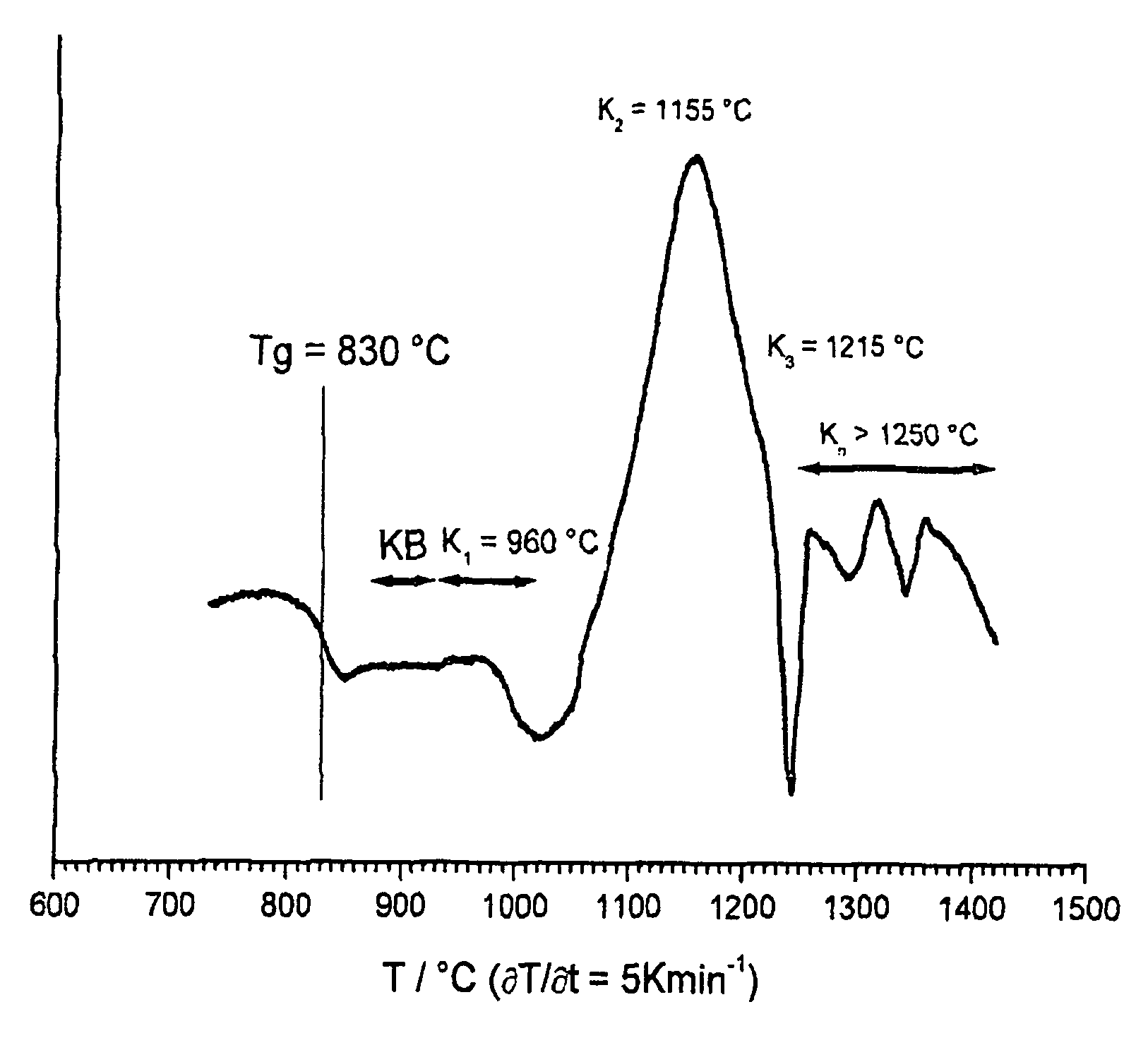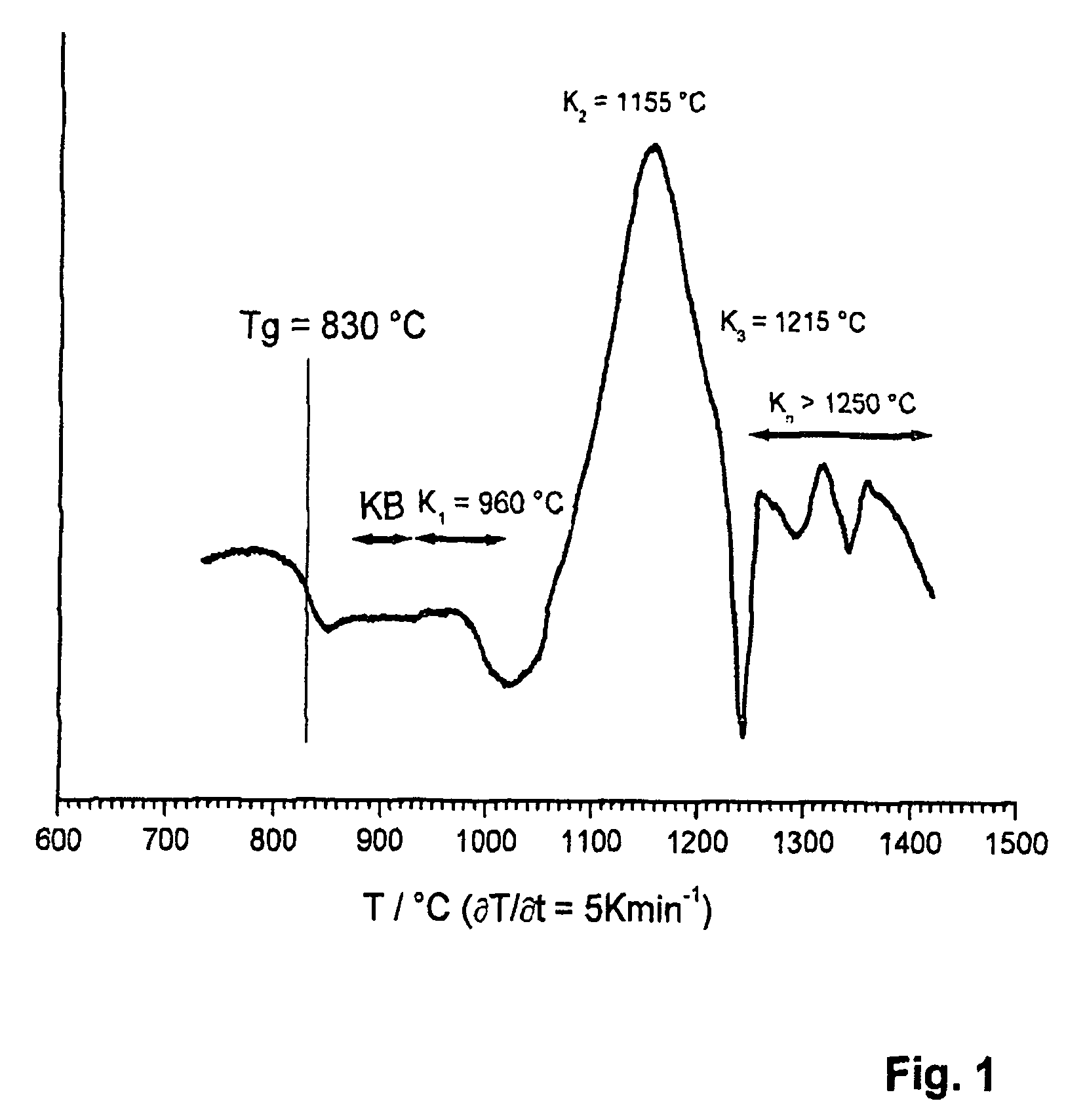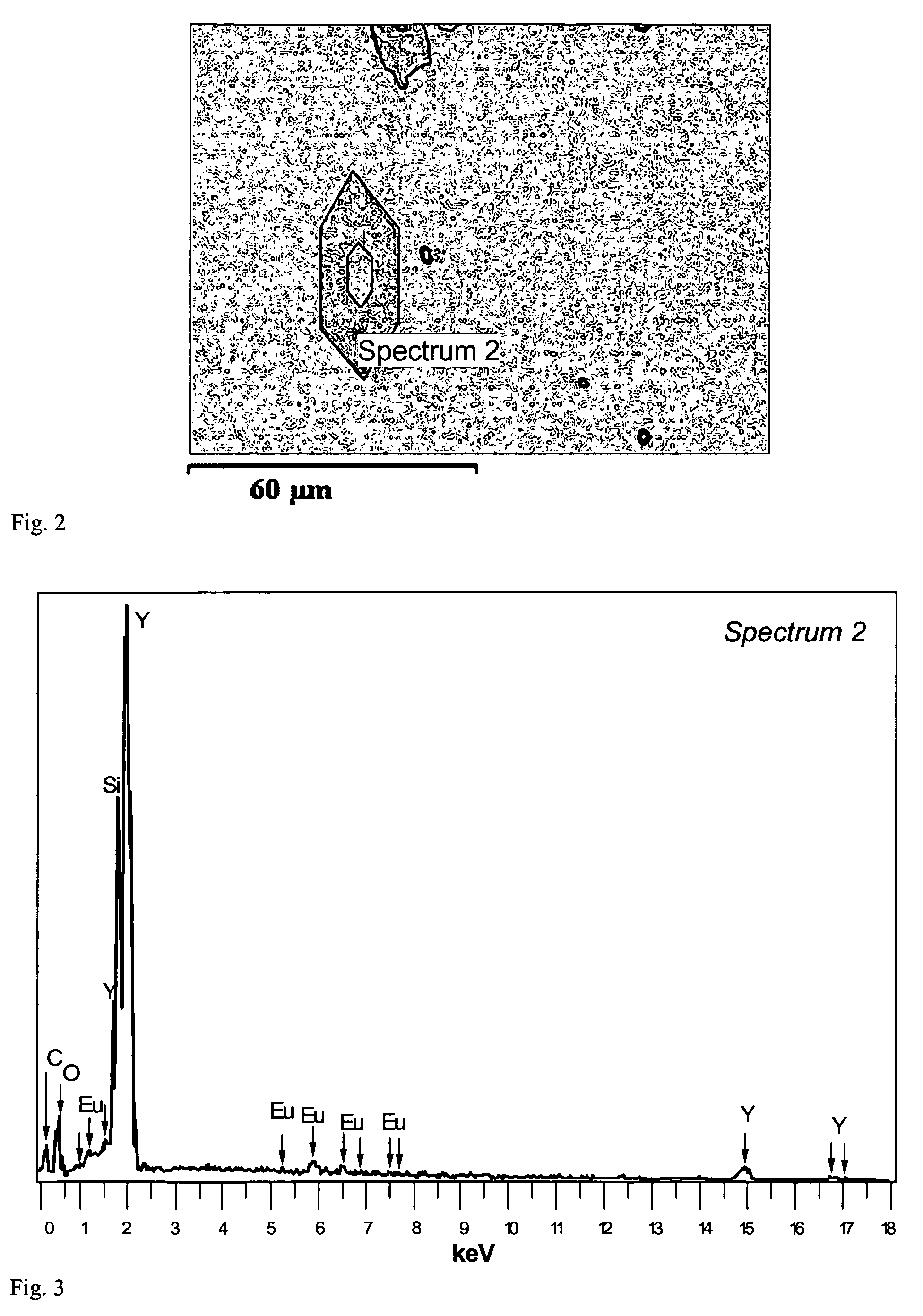Conversion material
a technology of conversion materials and glass or glassceramic, applied in the field of glass or glassceramic, can solve the problems of scattering losses, unsatisfactory colour, and embedded phosphors in epoxy resins, and achieve the effects of high y2o3 content, effective doping, and advantageous luminescence properties
- Summary
- Abstract
- Description
- Claims
- Application Information
AI Technical Summary
Benefits of technology
Problems solved by technology
Method used
Image
Examples
Embodiment Construction
[0060]A first glass (cf. table 1, example 1) comprising the following constituents (in % by weight, based on oxide) was melted:
[0061]
SiO223.64B2O3 6.36Al2O320.91Y2O346.36Eu2O3 2.73.
[0062]The glass was melted and homogenized in a platinum crucible at a temperature of approximately 1550 to 1600° C.
[0063]A clear, transparent glass was obtained after cooling to room temperature.
[0064]The material according to the invention lights up bright-orange both in the vitreous state and in the ceramicized state if it is excited with UV light (λ=250 to 400 nm).
[0065]FIG. 1 shows the result of a differential thermal analysis (DTA).
[0066]The glass transformation temperature Tg is very high at 830° C.
[0067]Further heating produced crystallization temperatures for various crystal phases. Borate phases (YBO3) were produced in the range denoted by “KB”. Y2Si2O7 was formed in the range denoted by K1. K2 / K3 shows the transformation / recrystallization of Y2Si2O7 phases into various isotypes (isotype: same c...
PUM
| Property | Measurement | Unit |
|---|---|---|
| weight ratio | aaaaa | aaaaa |
| colour temperature | aaaaa | aaaaa |
| size | aaaaa | aaaaa |
Abstract
Description
Claims
Application Information
 Login to View More
Login to View More - R&D
- Intellectual Property
- Life Sciences
- Materials
- Tech Scout
- Unparalleled Data Quality
- Higher Quality Content
- 60% Fewer Hallucinations
Browse by: Latest US Patents, China's latest patents, Technical Efficacy Thesaurus, Application Domain, Technology Topic, Popular Technical Reports.
© 2025 PatSnap. All rights reserved.Legal|Privacy policy|Modern Slavery Act Transparency Statement|Sitemap|About US| Contact US: help@patsnap.com



